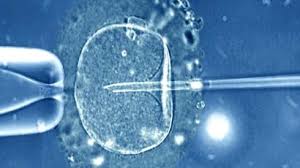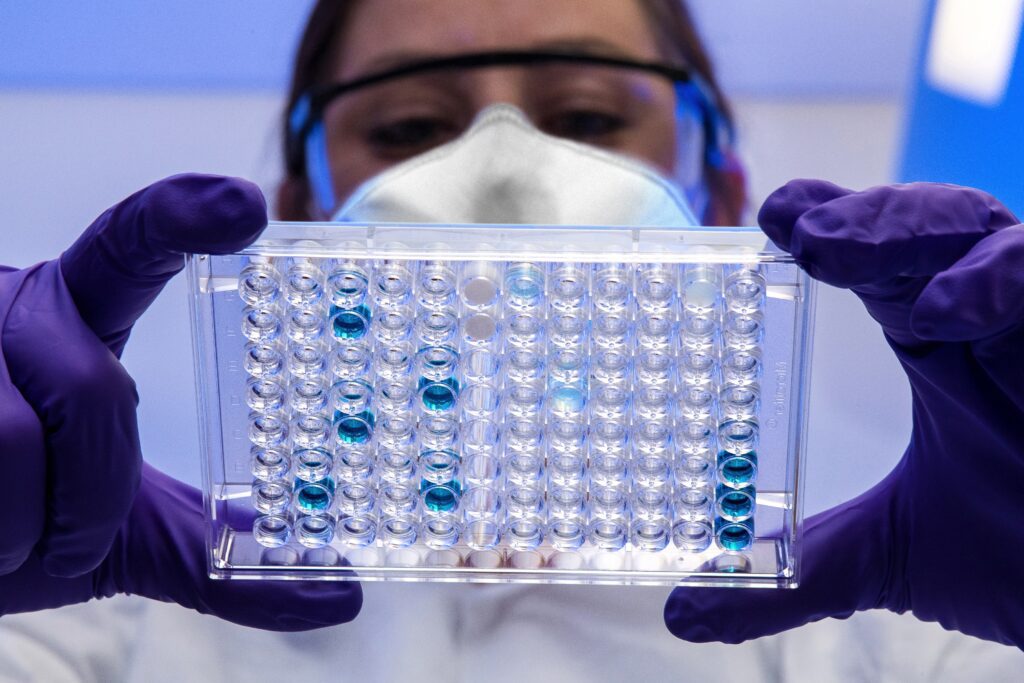How Many Embryos to Transfer in Surrogacy: A Comprehensive Guide

Embarking on a surrogacy journey is a momentous decision for intended parents, filled with hope, anticipation, and a multitude of questions.
One of the most crucial decisions they face is determining the number of embryos to transfer during their surrogacy program. The answer to this question can significantly impact the chances of success, the health of both the surrogate mother and the baby, and the overall cost of the surrogacy process. In this comprehensive guide, we will delve into the various factors, considerations, and recommendations surrounding the number of embryos to transfer in surrogacy.
Get in touch for a Free Surrogacy Consultancy:
📲 +91-8800481100 ( WhatsApp, Line, Viber)

Assisted reproductive technology (ART) refers to medical procedures that are used to help people conceive a child. There are several different types of ART, including in vitro fertilization (IVF), intracytoplasmic sperm injection (ICSI), and gamete intrafallopian transfer (GIFT).
These procedures are often used by couples who are struggling with infertility or who are unable to conceive naturally.
IVF is the most common type of ART and involves fertilizing an egg outside of the body and then transferring it to the uterus. ICSI is similar to IVF but involves directly injecting a single sperm into an egg to increase the chances of fertilization.
GIFT involves placing sperm and eggs into a woman’s fallopian tubes where fertilization can then occur naturally. While ART has provided hope and the opportunity for many couples to have children, it also raises ethical and social concerns. These procedures can be complex, expensive, and have potential risks and complications, making it important for couples to carefully consider their options before pursuing ART.

Understanding the Impact of Embryo Transfer on Success Rates
The number of embryos transferred in a surrogacy program can play a pivotal role in the overall success rate of achieving a healthy pregnancy.
Many doctors and clinics have differing opinions on this matter. However, it is generally observed that clinics with higher success rates tend to transfer fewer embryos. For instance, in the United States, the American Society for Reproductive Medicine (ASRM) recommends transferring only one embryo per procedure to reduce the risk of twin pregnancies.
On the other hand, overseas clinics often follow a protocol of transferring two or more viable and healthy embryos.
It is essential to recognize that each transferred embryo carries a significant chance of leading to a pregnancy, but at the same time, it increases the likelihood of multiple births, such as twins or triplets.

The Risks of Multiple Embryo Transfers
While multiple embryos may seem like an attractive option to increase the chances of pregnancy success, it also brings along serious risks.
Twin pregnancies, for example, have a higher risk of premature birth and other complications. Over 60% of twins are born prematurely before 37 weeks, often leading to potential health concerns for the babies and the surrogate mother.
Babies born prematurely may have developmental issues and need specialized care in the Neonatal Intensive Care Unit (NICU), resulting in significant additional medical expenses.
The Dilemma of Transferring More Embryos for Surrogates and Intended Parents
When transferring more than one embryo it is good to consider the risks and complications that come with twins pregnancy. Intended parents often grapple with the dilemma of transferring more embryos for increased pregnancy likelihood versus the potential risks associated with multiple births.
While the belief persists that transferring more embryos leads to higher pregnancy rates ( or higher success rates), some researchers argue that it may actually decrease the chance of pregnancy in certain cases.
Forbes data on in vitro fertilization (IVF) procedures indicates that clinics with the highest birth rates tend to perform transfers with multiple embryos.
However, the correlation between the use of multiple embryos and the overall birth rate is not significant.
Many IVF clinics do not show a higher total birth rate when transferring multiple embryos; instead, they primarily achieve a higher rate of twin births.

Selecting an Optimal Number of Embryos
The choice of the number of embryos to transfer ultimately depends on various factors, including the clinic’s success rates, the surrogate’s health, and the intended parents’ preferences.
While the ASRM and other medical bodies encourage single embryo transfers to minimize risks, some clinics may still transfer multiple embryos if parents insist.
The key is for clinics to provide transparent information to intended parents about the success rate of single embryo transfers and work together to determine the best course of action that prioritizes the well-being of all parties involved.
International Variations in Embryo Transfer Practices
Embryo transfer practices can vary significantly between countries.
In the United States, there is a growing trend towards single embryo transfers, aligning with the ASRM’s guidelines
On the contrary, clinics in developing countries may still be more inclined to transfer multiple embryos due to limited resources and different medical practices. For instance, clinics in India and in Kenya may transfer up to three embryos, but only if the embryos’ quality is suboptimal.
Making Informed Decisions: Considerations for Intended Parents
Intended parents should approach the decision of embryo transfer with a thorough understanding of the risks and benefits associated with different approaches. The chances of embryo implantation need to be evaluated.
It is crucial to consider the surrogate’s health and preferences, the clinic’s success rates, and the potential financial implications of multiple births, including NICU costs and additional compensation for the surrogate.
While the desire for a successful pregnancy is understandable, it is essential to balance the chances of success with the health and safety of the surrogate and the baby.
Open communication with the fertility clinic and a willingness to make an informed decision with the surrogate mother and doctor will ultimately lead to the most positive and fulfilling surrogacy experience.
More resources:
Having Surrogacy Twins Babies With Different Fathers
What are the Risks of a Surrogate with Twins?
How Does Surrogacy Process Work- 7 Easy-to-Follow Surrogacy Steps
Surrogacy Costs Breakdown: A Comprehensive Guide

Number of Embryos to Transfer in Surrogacy – FAQ
1. What is the recommended number of embryos to transfer in surrogacy?
The recommended number of embryos to transfer in surrogacy varies and depends on several factors such as the age and health of the intended mother, the quality of the embryos, and the guidelines set by the fertility clinic and surrogacy agency. The goal is to minimize the risk of multiple pregnancies while maximizing the chance of a successful pregnancy.
2. Is it better to transfer one embryo or multiple embryos in surrogacy?
Transferring one embryo, also known as single-embryo transfer, is generally considered the safer option as it reduces the risk of multiple pregnancies, which can pose potential health risks for both the surrogate mother and the babies. However, in cases where the chances of successful implantation are low, transferring multiple embryos may be considered to increase the likelihood of pregnancy.
3. How does the number of embryos transferred impact the success rate of surrogacy?
The success rate of surrogacy is influenced by several factors, including the quality of the embryos, the age and health of the intended mother, and the number of embryos transferred. While transferring more embryos may increase the chances of pregnancy, it also raises the risk of multiple pregnancies. It is crucial to find the right balance to maximize the success rate while minimizing potential risks.
4. What are the risks associated with transferring multiple embryos in surrogacy?
Transferring multiple embryos in surrogacy increases the risk of multiple pregnancies, which can lead to complications such as premature birth, low birth weight, and other medical issues for the babies. There are also potential health risks for the surrogate mother, including gestational diabetes and high blood pressure. Careful consideration should be given to the number of embryos transferred to mitigate these risks.
5. Are there any guidelines or recommendations from medical organizations regarding the number of embryos to transfer in surrogacy?
Yes, the American Society for Reproductive Medicine (ASRM) provides guidelines on the number of embryos to transfer in surrogacy. These guidelines aim to promote the best clinical practices while minimizing the risk of multiple pregnancies. It is important for intended parents and fertility clinics to adhere to these recommendations for the well-being of all parties involved.
6. What are the risks associated with transferring multiple embryos in surrogacy?
Transferring multiple embryos in surrogacy is associated with an increased risk of multiple pregnancies, as well as certain adverse outcomes.
A systematic review and meta-analysis showed that multiple embryo transfer (MET) resulted in a higher likelihood of clinical pregnancy, live delivery, and multiple delivery rates compared to single embryo transfer (SET) in gestational carriers.
However, it also led to more adverse events, such as miscarriage, preterm birth, and low birth weight. From a public health perspective, single embryo transfer (SET) is advocated as the preferred treatment to reduce the risks associated with multiple pregnancies in surrogacy arrangements
7. Can a single embryo transfer be successful in surrogacy?
Yes, a single embryo transfer (SET) can be successful in surrogacy. While transferring multiple embryos may increase the chances of pregnancy, SET has been shown to result in clinical pregnancies and live deliveries in gestational carriers.
It may have a lower risk of adverse outcomes associated with multiple pregnancies compared to transferring multiple embryos.
8. How do doctors determine the number of embryos to transfer in surrogacy?
The number of embryos to transfer in surrogacy is typically determined based on various factors, including
- the intended parents’ preferences,
- the age and health of the gestational carrier,
- the quality and viability of the embryos,
- guidelines and regulations of the fertility clinic or reproductive specialists.
The goal is to strike a balance between increasing the chances of pregnancy success and reducing the risks associated with multiple pregnancies and complications
9. Is it possible to transfer multiple embryos of different genetic backgrounds in surrogacy?
Yes, it is possible to transfer multiple embryos of different genetic backgrounds in surrogacy.
In gestational surrogacy, the embryos transferred to the gestational carrier can be created using the genetic material of the intended parents or donors.
This allows for the possibility of transferring multiple embryos with diverse genetic backgrounds, depending on the intended parents’ preferences and the fertility treatment plan.
10. Are there any legal restrictions on the number of embryos that can be transferred in surrogacy?
The legal restrictions on the number of embryos that can be transferred in surrogacy vary from country to country and may also be subject to individual fertility clinic policies.
Some countries have guidelines or laws that limit the number of embryos that can be transferred to reduce the risks of multiple pregnancies and associated complications.
Intended parents should consult with their fertility specialists and legal advisors to understand the specific regulations and guidelines governing surrogacy in their location.
11. What are the implications of transferring more embryos than recommended in surrogacy?
Transferring more embryos than recommended in surrogacy can lead to an increased risk of multiple pregnancies.
While multiple pregnancies may result in more than one live birth, they are also associated with higher rates of adverse outcomes, such as miscarriage, preterm birth, and low birth weight.
The health and well-being of the gestational carrier and the babies could be compromised in such cases.
To avoid these risks, it is essential to follow the recommended guidelines and consider the health and safety of all parties involved in the surrogacy arrangement.

Conclusion
The number of embryos to transfer in surrogacy is a complex and critical decision that requires careful consideration by all parties involved.
While multiple embryo transfers may increase the likelihood of pregnancy, they also carry significant risks, including complications associated with multiple births.
Intended parents should collaborate closely with their chosen clinic, taking into account medical guidelines, the surrogate’s health, and their personal preferences to make the most informed decision.
Remember, the goal of surrogacy is not only to achieve a successful pregnancy but also to ensure the well-being of the surrogate mother and the baby.
By prioritizing transparency, communication, and the overall health and safety of all involved, intended parents can embark on their surrogacy journey with confidence and hope for a bright future ahead.
If you are using a blastocyst (day 5 embryo) with PGD (genetic testing), it is recommended to transfer one embryo. However, if you are using a day 3 embryo-like most of the developing countries do, they prefer to transfer 2-3 embryos.
Ultimately, the decision between single and double embryo transfer in surrogacy depends on several factors, including the age of the intended mother, the quality of embryos, and personal preferences. Based on recent studies and expert recommendations,
SET appears to be a favorable choice for women aged below 40 or those with good-quality embryos.
For women over 40 or those lacking good-quality embryos, DET may be a viable option.
However, more research is needed to provide conclusive evidence for this age group. Remember to consult with your surrogacy agency and medical professionals to make the most informed decision for a successful and fulfilling surrogacy journey.
Get in touch for a Free Surrogacy Consultancy:
📲 +91-8800481100 ( WhatsApp, Line, Viber)
Reference used:

